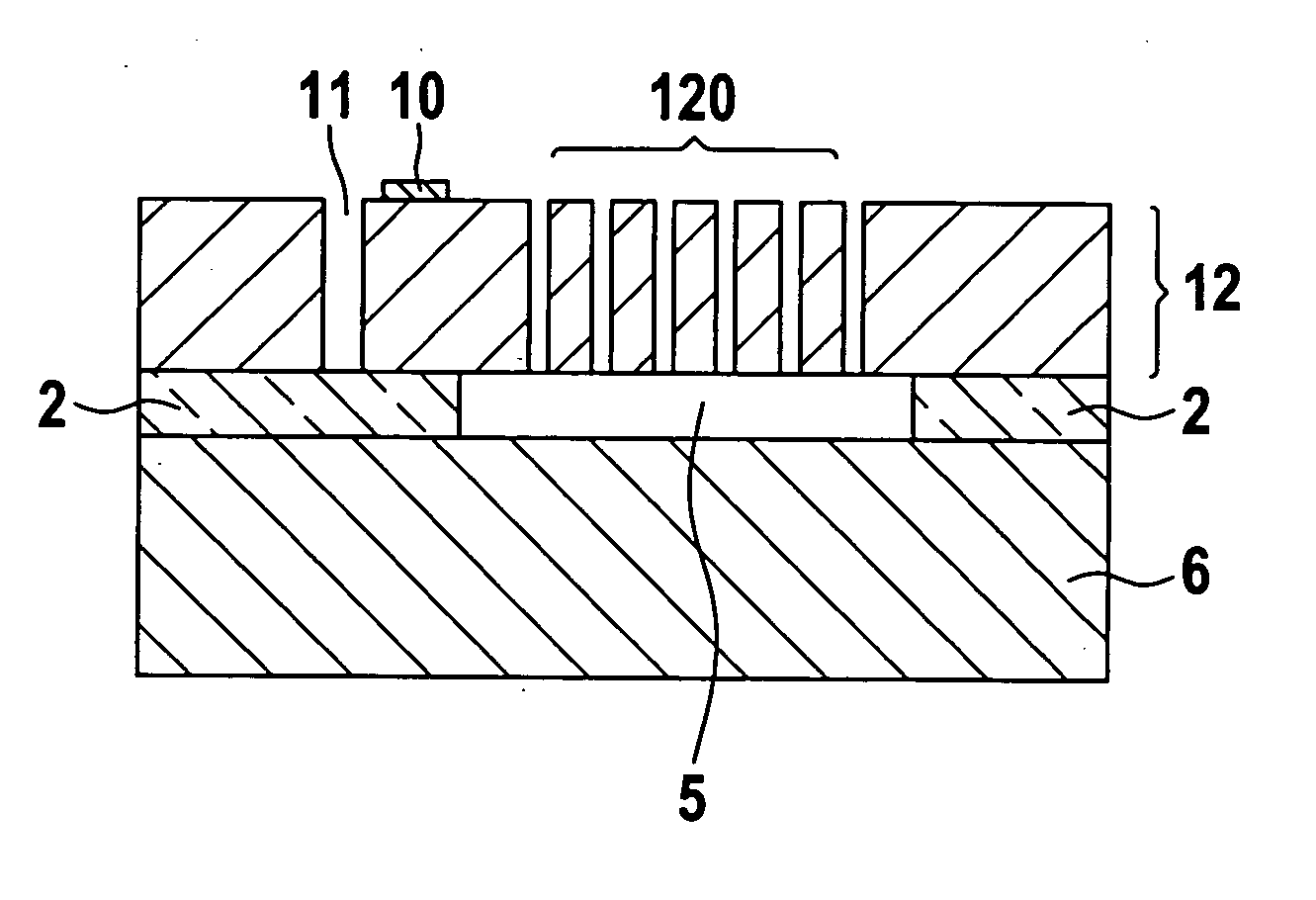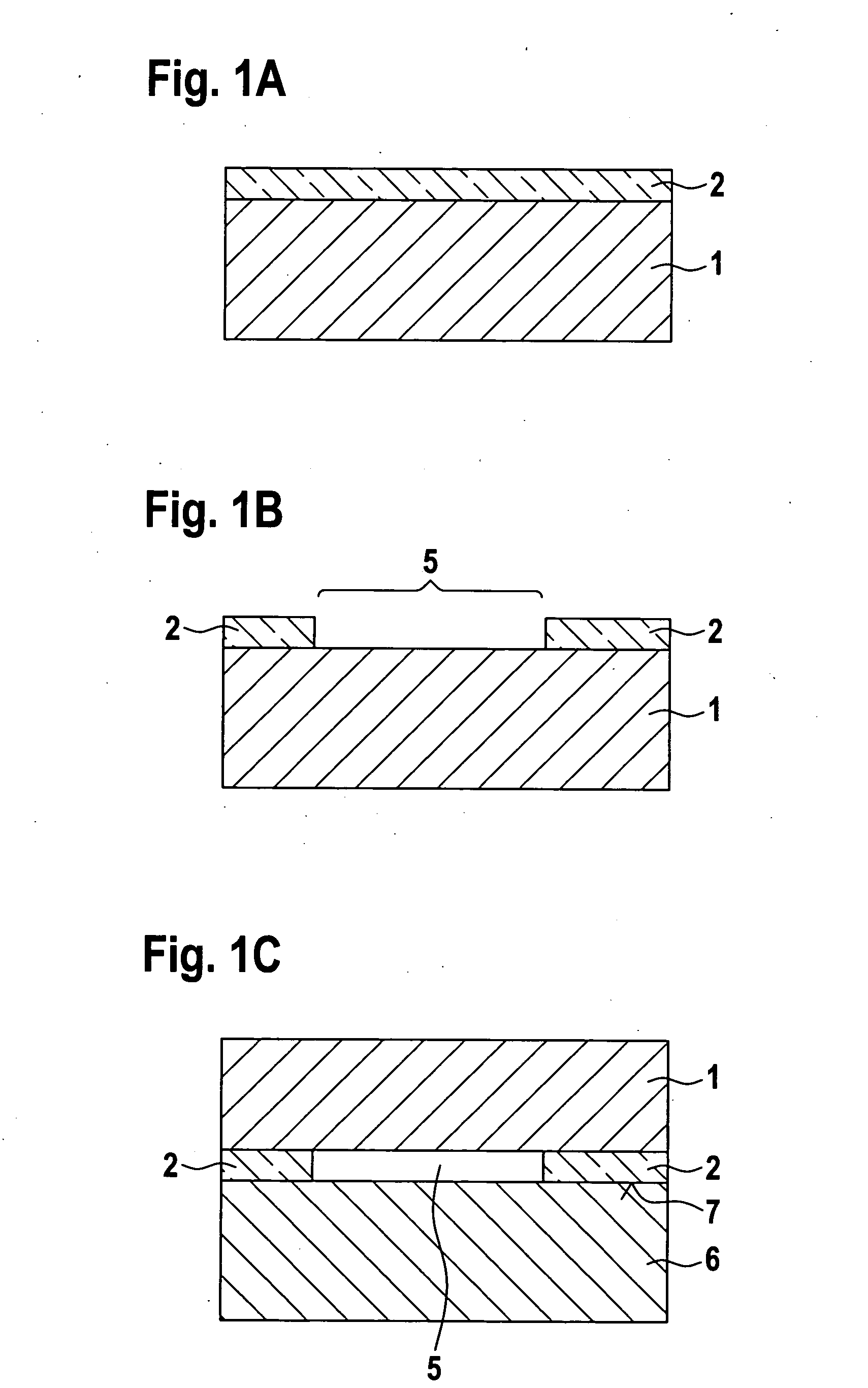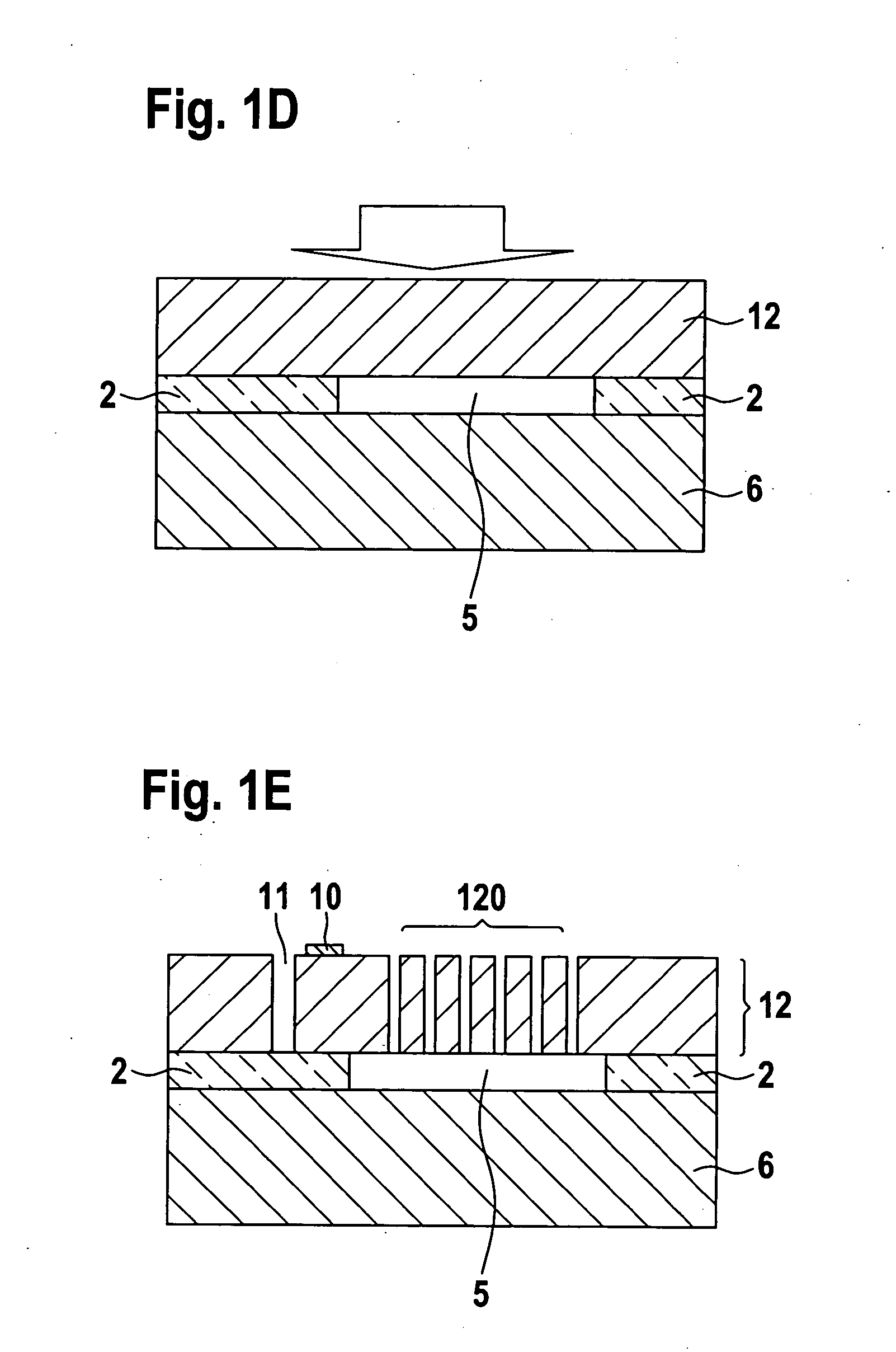Method for anodic bonding of wafers and device
a technology of anodic bonding and wafers, applied in the manufacture of microstructural devices, electrical apparatus, semiconductor devices, etc., can solve the problems of limited thickness of useful silicon layer and oxide layer, high cost of simox method, and inability to produce thick layers and planar surfaces. to achieve the effect of preventing bond defects
- Summary
- Abstract
- Description
- Claims
- Application Information
AI Technical Summary
Benefits of technology
Problems solved by technology
Method used
Image
Examples
Embodiment Construction
[0041] The present invention is described in detail with reference to the following exemplary embodiments.
[0042]FIGS. 1A through 1E show the anodic bonding of a base wafer with an intermediate layer and a second wafer. In one embodiment of the method, an SOI wafer is manufactured in this way. FIG. 1A shows a silicon substrate 1 and deposited intermediate layer 2. In an advantageous embodiment of the method according to the present invention, a glass layer 2 is applied as intermediate layer 2 to silicon substrate 1, using a spin-on-glass technique (SOG), and heated, so that a planar surface is obtained on layer 2. As shown in FIG. 1B, layer 2 may be structured by etching, for example, so that recesses 5, which are subsequently located underneath the sensor structure, are obtained. The etching step creates adjustment marks for recesses 5, which may be used for the subsequent adjustment of the back surfaces. Layer 2 may, however, also be processed unstructured. In the following step, ...
PUM
 Login to View More
Login to View More Abstract
Description
Claims
Application Information
 Login to View More
Login to View More - R&D
- Intellectual Property
- Life Sciences
- Materials
- Tech Scout
- Unparalleled Data Quality
- Higher Quality Content
- 60% Fewer Hallucinations
Browse by: Latest US Patents, China's latest patents, Technical Efficacy Thesaurus, Application Domain, Technology Topic, Popular Technical Reports.
© 2025 PatSnap. All rights reserved.Legal|Privacy policy|Modern Slavery Act Transparency Statement|Sitemap|About US| Contact US: help@patsnap.com



